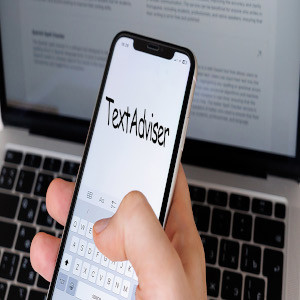Why users choose our The main idea
| 🌎 English | Quickly finding the main idea of the text |
|---|---|
| 💡 Guests | up to 10,000 characters |
| 🪙 Users | up to 15,000 characters |
| 🎯 PRO version | up to 200,000 characters per single check, ad-free, and a separate queue |
| 👍 Rating | 4.7 based on 5130 reviews |

TextAdviser is an innovative online service designed to automatically extract and identify the main idea from any given text, making it an indispensable tool for various users. Its primary function is to condense lengthy texts by selecting and summarizing the most crucial sentences that capture the essence of the author's message.
For students and schoolchildren, TextAdviser proves invaluable in the realm of education. Throughout their academic journey, students encounter tasks that require them to discern and articulate the main idea of a text. This skill is not only crucial for comprehension but also enhances their ability to retain and recall information effectively. TextAdviser simplifies this process, helping students excel in their studies and standardized exams.
Professionals dealing with substantial volumes of text content also stand to benefit from TextAdviser. Whether it's researchers, content creators, or professionals in various fields, the service offers a means to significantly reduce the time spent reading through extensive documents, thus enhancing overall productivity.
Using TextAdviser is a straightforward process, making it accessible to users of all backgrounds. Users simply need to copy the text they want to analyze to their clipboard and then paste it into the program's working window. After pasting, they can click the "Find" button, and TextAdviser automatically detects and records the main idea of the text.
The service employs a sophisticated algorithm to determine the main idea effectively:
- Text Analysis: The program reads the provided text thoroughly.
- Keyword and Phrase Analysis: It identifies keywords and phrases, as well as their synonyms, which are repeated frequently within the text. These keywords are essential in conveying the text's main idea.
- Subheading and Paragraph Examination: The algorithm divides the text into paragraphs, recognizing micro-themes created by the author. This step helps identify key sections that are integral to understanding the topic.
- Logic Evaluation: The program traces the logical development of the story throughout the text. Understanding the logical flow is vital in identifying the main message.
- Utilizing the Text Title: If the user provides the title of the text along with its content, TextAdviser considers this additional context. Often, the title contains elements of the main idea, even if it is metaphorical, paradoxical, or associative.
TextAdviser offers different character limitations depending on the user's status:
- Site guests can analyze up to 10,000 characters at once.
- Registered users have a limit of 15,000 characters.
- PRO version users, in addition to an extended character limit of 200,000 characters, enjoy an ad-free experience and a separate queue for their requests. They can also conveniently refill their balance as needed before utilizing the PRO version's enhanced features.
- In summary, TextAdviser is a user-friendly, online service designed to help students, professionals, and anyone dealing with extensive text content quickly and accurately identify the main idea of a text. It streamlines the process, making it an indispensable tool for enhancing comprehension, productivity, and information retention.
How to Define the Main Idea
Defining the main idea requires a keen eye and a strategic approach:
Careful Reading: Begin by thoroughly reading the text. Absorb the information and try to grasp the overall context and tone.
Identify Keywords: Pay attention to keywords and phrases that frequently appear. These are often indicators of the central theme.
Understand Supporting Details: The main idea is usually supported by details and examples. Recognize the elements that reinforce the core concept.
How to Find the Main Idea
Locating the main idea involves a combination of reading techniques and critical thinking:
Structural Elements: Examine the structure of the text. Headings, subheadings, and transitions can guide you toward the central theme.
First and Last: Often, the main idea is introduced in the first sentence or paragraph and summarized in the last. Focus on these areas for key insights.
Repeated Concepts: Identify recurring themes or ideas. Repetition can signal the significance of a particular concept.
Avoid Main Idea Mistakes
Recognizing and steering clear of common mistakes is crucial in honing your main idea identification skills:
Don’t Confuse Details with the Main Idea: Details support the main idea but are not the main idea themselves. Distinguish between overarching themes and supporting information.
Watch for Red Herrings: Be cautious of distractors or irrelevant information that might divert your attention from the core concept.
Consider the Context: Ensure that your interpretation aligns with the overall context of the text. Misjudging context can lead to inaccuracies in identifying the main idea.
Where Are The Main Ideas Found?
Understanding where to look for main ideas can simplify the process:
Headings and Subheadings: Often, the main idea of a section is encapsulated in its heading or subheading.
Topic Sentences: In paragraphs, the main idea is typically expressed in the topic sentence. Identify the sentence that encapsulates the central theme.
Concluding Remarks: The conclusion of a text may summarize the main idea, providing a succinct overview.
How To Determine If I Have Selected the Correct Main Idea of a Paragraph?
Verifying your main idea selection is a crucial step in ensuring accuracy:
Check Consistency: Confirm that your selected main idea aligns with the details and supporting information provided in the paragraph.
Review the Context: Reassess your choice in the context of the entire text. Ensure that the main idea you've identified fits seamlessly into the broader narrative.
Seek Feedback: Discuss your interpretation with others. Their perspectives can offer valuable insights and help refine your understanding.

 android
android